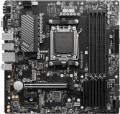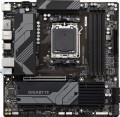Features
The general specialization of the motherboard is the type of tasks for which it is optimized. It should be noted that the division according to this indicator is often rather conditional, models similar in characteristics may belong to different categories. However, the data on specialization greatly simplifies the choice.
In addition to the traditional "motherboards"
for home and office, nowadays you can find solutions
for high-end PCs (High-End Desktop) and
for servers, as well as
gaming boards and models
for overclocking(the last two options are sometimes combined into one category , however, these are still different types of motherboards). There are also specialized models
for cryptocurrency mining, but very few of them are produced — especially since many boards that originally had a different purpose are suitable for mining (see "Suitable for mining").
Here is a more detailed description of each variety:
— For home and office. Motherboards that do not belong to any of the more specific types. In general, this kind of "motherboards" is very diverse, it includes options from low-cost motherboards for modest office PCs to advanced models that come close to gaming and HEDT solutions. However, for the most part, solutions from this category
...are designed for simple everyday tasks: working with documents, web surfing, 2D design and layout, games in low and medium quality, etc.
— Gamer's. Boards originally designed for use in advanced gaming PCs. In addition to high performance and compatibility with powerful components, primarily video cards (often several at once, in SLI and/or Crossfire format — see below), such models usually also have specific features of a gaming nature. The most noticeable of these features is the characteristic design, sometimes with backlighting and even backlight synchronization (see below), which allows you to organically fit the board into the original design of the gaming station. The functionality of gaming boards may include an advanced audio chip, a high-end network controller to reduce lags in online games, built-in software tools for tuning and optimizing performance, etc. Also, such models may provide advanced overclocking capabilities, sometimes not inferior to the capabilities of specialized boards for overclocking (see below). And sometimes the border between gaming and overclocking solutions is generally erased: for example, individual boards positioned by the manufacturer as gaming ones, in terms of functionality, can more likely be related to overclocking models.
— For overclocking. High-performance boards with an extended set of overclocking tools — improving system performance by fine-tuning individual components (mainly by increasing the clock frequencies used by these components). On most conventional motherboards, this setup involves considerable complexity and risk, it is usually an undocumented feature and is not covered by the warranty. However, in this case, the situation is the opposite: boards "for overclocking" are called so because the possibility of overclocking was originally incorporated in them by the manufacturer. One of the most noticeable features of such models is the presence in the firmware (BIOS) of special software tools for overclocking management, which makes overclocking as safe as possible and affordable even for inexperienced users. Another feature is improved compatibility with built-in overclocking tools provided in advanced processors, RAM modules, etc. Anyway, this particular type of board will be the best choice for those who want to build a fairly powerful PC with the ability to experiment in terms of performance.
— HEDT (High End Desktop). Motherboards designed for high-performance workstations and other PCs of a similar level. In many ways, they are similar to gaming ones and are sometimes even positioned as gaming ones, but they are designed more for general performance (including in professional tasks) than for confident work with games. One of the key features of such "motherboards" is the extensive functionality for working with RAM: they provide at least 4 slots for "RAM", and more often 6 or more, the maximum RAM frequency is at least 2500 MHz (and more often 4000 MHz and higher ), and the maximum volume is at least 128 GB. The rest of the characteristics are usually at a similar level. Also, the firmware may provide tools for overclocking, although in terms of this functionality, such boards are most often still inferior to overclockers. Note that such solutions can initially be positioned as gaming; the basis for categorization in the HEDT category in such cases is the fulfillment of the above criteria.
— For the server. Motherboards specially designed for servers. Such systems are noticeably different from conventional desktop PCs — in particular, they work with large volumes of drives and have increased requirements for the speed and reliability of data transfer; accordingly, to build servers, it is best to use specialized components, including motherboards. Among the main features of such motherboards are an abundance of slots for RAM (often more than 4), the ability to connect numerous drives (necessarily more than 4 SATA 3 slots, often 8 or more), as well as support for special technologies (like ECC — see below) . In addition, such boards can be made in specific form factors such as EEB or CEB (see "Form Factor"), although more traditional options are also found.
— Designed for mining. Motherboards specially designed for cryptocurrency mining (BitCoin, Ethereum, etc.). We emphasize that we are not just talking about the possibility of such an application (see “Suitable for mining”), but that the motherboard is initially positioned as a solution for creating a cryptocurrency “farm”. Recall that mining is the extraction of cryptocurrency by performing special calculations; such calculations are most conveniently carried out using several high-performance video cards at once. Accordingly, one of the distinguishing features of mining boards is the presence of several (usually at least 4) PCI-E 16x slots for connecting such video cards. However, this category of “motherboards” has not received much distribution: similar characteristics are also found among more general-purpose boards, it is quite possible to achieve performance sufficient for efficient mining on them.Power phases
The number of processor power phases provided on the motherboard.
Very simplistically, phases can be described as electronic blocks of a special design, through which power is supplied to the processor. The task of such blocks is to optimize this power, in particular, to minimize power surges when the load on the processor changes. In general, the more phases, the lower the load on each of them, the more stable the power supply and the more durable the electronics of the board. And the more powerful the CPU and the more cores it has, the more phases it needs; this number increases even more if the processor is planned to be overclocked. For example, for a conventional quad-core chip, only four phases are often enough, and for an overclocked one, at least eight may be needed. It is because of this that powerful processors can have problems when used on inexpensive low-phase motherboards.
Detailed recommendations on choosing the number of phases for specific CPU series and models can be found in special sources (including the documentation for CPU itself). Here we note that with numerous phases on the motherboard (more than 8), some of them can be virtual. To do this, real electronic blocks are supplemented with doublers or even triplers, which, formally, increases the number of phases: for example, 12 claimed phases can represent 6 physical blocks with doublers. However, virtual phases are much inferior to real ones in terms of capabilities — in fact, t...hey are just additions that slightly improve the characteristics of real phases. So, let's say, in our example, it is more correct to speak not about twelve, but only about six (though improved) phases. These nuances must be specified when choosing a motherboard.
Max. clock frequency
The maximum RAM clock speed supported by the motherboard. The actual clock frequency of the installed RAM modules should not exceed this indicator — otherwise, malfunctions are possible, and the capabilities of the “RAM” cannot be used to the fullest.
For modern PCs, a RAM frequency of
1500 – 2000 MHz or
less is considered very low,
2000 – 2500 MHz is modest,
2500 – 3000 MHz is average,
3000 – 3500 MHz is above average, and the most advanced boards can support frequencies of
3500 – 4000 MHz and even
more than 4000 MHz.
M.2 SSD cooling
Motherboard-integrated
cooling for M.2 SSD drives.
This connector allows you to achieve high speed, however, for the same reason, many M.2 SSDs have high heat dissipation, and additional cooling may be required to avoid overheating. Most often, the simplest radiator in the form of a metal plate is responsible for such cooling — in the case of an SSD, this is quite enough.
1x PCI-E slots
Number of PCI-E (PCI-Express) 1x slots installed on the motherboard. There are
motherboards for 1 PCI-E 1x slot,
2 PCI-E 1x slots,
3 PCI-E 1x ports and even more.
The PCI Express bus is used to connect various expansion cards — network and sound cards, video adapters, TV tuners and even SSD drives. The number in the name indicates the number of PCI-E lines (data transfer channels) supported by this slot; the more lines, the higher the throughput. Accordingly, PCI-E 1x is the basic, slowest version of this interface. The data transfer rate for such slots depends on the PCI-E version (see "PCI Express Support"): in particular, it is slightly less than 1 GB / s for version 3.0 and slightly less than 2 GB / s for 4.0.
Separately, we note that the general rule for PCI-E is as follows: the board must be connected to a slot with the same or more lines. Thus, only single-lane boards will be guaranteed to be compatible with PCI-E 1x.
ARGB LED strip
Connector for connecting an addressable LED strip as a decorative lighting for a computer case. This type of "smart" tape is based on special LEDs, each of which consists of an LED light and a built-in controller, which allows you to flexibly control the luminosity using a special digital protocol and create amazing effects.
RGB LED strip
Connector for connecting a decorative LED strip and other devices with LED indication. Allows you to control the backlight of the case through the motherboard and customize the glow for your tasks, including synchronize it with other components.
D-Sub output (VGA)
The motherboard has its own
D-Sub (VGA) output.
Such an output is intended for transmitting video from an integrated graphics card (see above) or a processor with integrated graphics (we emphasize that it is impossible to output a signal from a discrete graphics card through the motherboard chipset). As for VGA specifically, it is an analogue standard originally created for CRT monitors. It does not differ in image quality, is practically not suitable for resolutions above 1280x1024 and does not provide sound transmission, and therefore is generally considered obsolete. However, this type of input continues to be used in some monitors, TVs, projectors, etc.; so among motherboards you can find models with such outputs.
Audiochip
The model of the audio chip (a module for processing and outputting sound) installed on the motherboard. Data on the exact name of the sound chip will be useful when looking for detailed information about it.
Modern "motherboards" can be equipped with fairly advanced audio modules, with high sound quality and extensive features, which makes them suitable even for gaming and multimedia PCs (although professional audio work will still most likely require a separate sound card). Here are the most popular modern audio chips:
Realtek ALC887,
Realtek ALC892,
Realtek ALC1150,
Realtek ALC1200,
Realtek ALC1220,
Realtek ALC4050,
Realtek ALC4080,
Supreme FX.

